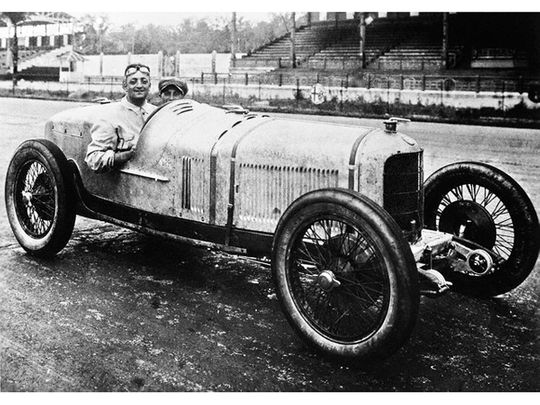
Count Francesco Baracca is a national hero in Italy. His exploits in the First World War are an integral part of Italian lore, and the country has honoured this valiant aviator by naming numerous roads and landmarks after him. All these gave him national acclaim, but it was for a different reason that Baracca’s name became known outside the country.
The Cavallino Rampante, or the Prancing Horse, that decorated the fuselage of his SPAD S.XIII fighter would have faded into oblivion, if his mother had not spotted the immense potential of another Italian youngster, Enzo Anselmo Ferrari. Countess Paolina was one of the spectators at a race in Ravenna in 1923 that the young Enzo Ferrari won driving an Alfa. The Countess could not miss the driver’s enormous talent and asked him to use the Prancing Horse badge on his cars, suggesting it would bring him good luck. The rest is history.
Enzo went on to become one of Italy’s most illustrious sons, and the Prancing Horse one of the most widely recognised automotive badges of all time. It was not roses all the way, though. Enzo, who served in the Italian army during the war, was forced to leave the service after being stricken by the flu outbreak that wreaked havoc in the country. Having lost his father and brother to the pandemic, Ferrari took up a small job with a company that used to rebody used trucks into cars. He was soon bitten by the racing bug, and he started participating in local races. But success eluded him until he joined Alfa Romeo and began racing their cars. He won several races in the early Twenties while working for Alfa, and in 1929, he set up a racing team for the company calling it Scuderia Ferrari. Under his guidance, the team grew stronger with many gifted drivers including Tazio Nuvolari, Achille Varzi and Giuseppe Campari. Enzo continued to race until the early Thirties.
Towards the end of the decade, when he felt that Alfa was relegating him to the sidelines, Enzo left the company and set up a firm of his own supplying parts to various racing teams, since a bond with Alfa required him to stay away from racing for four years. In 1947 he founded his own car company, Ferrari SpA, and started racing his cars the following year. Ferrari began building production sportscars only because he wanted to raise funds for his Grand Prix campaigns as well as Mille Miglia and Le Mans. I
n the early Sixties the company faced financial problems, and Enzo offered the customer car business to Ford, when a $10 million deal was agreed upon. But, just before he was to sign the final papers, Enzo took exception to a clause in the deal and backed out of it. This proved costly for Ferrari at Le Mans, as the incensed Henry Ford II commissioned the GT40 which went on to sweep the race from 1966 for four years running. In fact, no Ferrari could take the chequered flag at Le Mans after that.
In 1965, although reluctantly, Enzo allowed Fiat to take a stake in his firm which they increased to 50 per cent a few years later, and to 90 per cent in 1988, the same year that Ferrari died. Enzo is possibly one of the most decorated civilians in Italy’s history. Apart from being made a Commendatore in the Twenties, he has also received scores of other commendations for his work, including a posthumous induction into the International Motorsports Hall of Fame.



